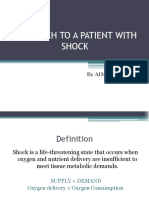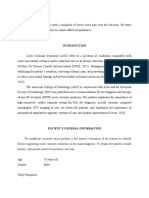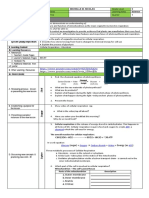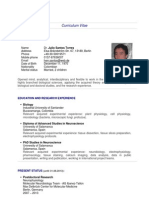0% found this document useful (0 votes)
94 views6 pagesTypes and Causes of Shock Explained
Shock is a critical condition caused by inadequate oxygen delivery to tissues. It can occur with normal, increased, or decreased blood pressure. There are four main types of shock: hypovolemic, distributive, cardiogenic, and obstructive. Hypovolemic shock is caused by inadequate blood volume from fluid loss and is characterized by low cardiac output. Distributive shock involves abnormal blood vessel dilation that improperly distributes blood flow, including septic and anaphylactic shock. Cardiogenic shock results from heart failure impairing tissue perfusion, while obstructive shock involves physical obstruction of blood flow.
Uploaded by
Basit AliCopyright
© © All Rights Reserved
We take content rights seriously. If you suspect this is your content, claim it here.
Available Formats
Download as DOCX, PDF, TXT or read online on Scribd
0% found this document useful (0 votes)
94 views6 pagesTypes and Causes of Shock Explained
Shock is a critical condition caused by inadequate oxygen delivery to tissues. It can occur with normal, increased, or decreased blood pressure. There are four main types of shock: hypovolemic, distributive, cardiogenic, and obstructive. Hypovolemic shock is caused by inadequate blood volume from fluid loss and is characterized by low cardiac output. Distributive shock involves abnormal blood vessel dilation that improperly distributes blood flow, including septic and anaphylactic shock. Cardiogenic shock results from heart failure impairing tissue perfusion, while obstructive shock involves physical obstruction of blood flow.
Uploaded by
Basit AliCopyright
© © All Rights Reserved
We take content rights seriously. If you suspect this is your content, claim it here.
Available Formats
Download as DOCX, PDF, TXT or read online on Scribd
/ 6



















































































































